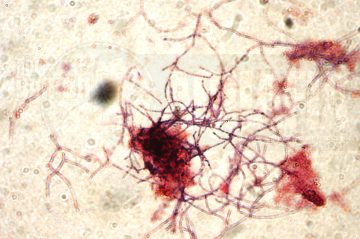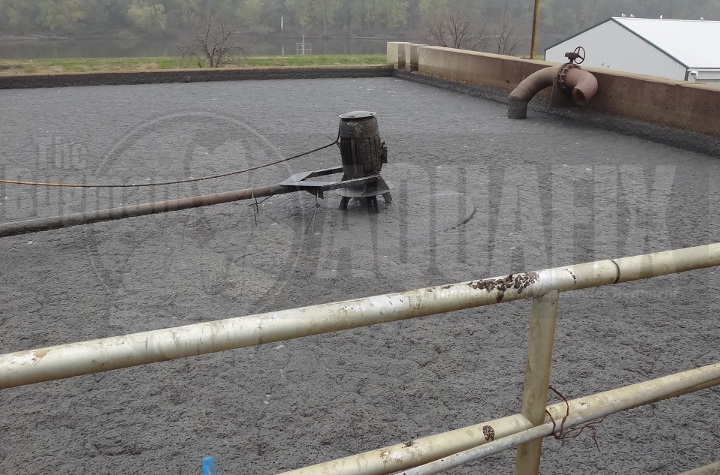The foaming filament Nocardia is a voracious eater in wastewater treatment plants. In the smallest amount, Nocardia can be beneficial to a WWTP by aiding to lower BOD.
When customers call with Nocardia, they will comment on their low effluent BOD. Small amounts of Nocardia will clarify the effluent, but if the sludge age gets a little too long, it can be disastrous. The foam will soon grow to enormous heights, causing mechanical malfunctions and damage. Nocardia typically is associated with a dark brown foam that varies in height. Aquafix has seen cases of it reaching 20 feet.
Attack Its Source!
The use of a defoamer is a common mistake for Nocardia control. Defoamer is just more food for the Nocardia filament. Our customer Steve, an operator at a cheese plant, said, “Putting defoamer on Nocardia film is like adding gasoline to fire. The Nocardia may retreat for 30 minutes, but the foaming will just come back worse, Foam Buster is a much smarter option.”
Nocardia will attempt to seed itself and the only way to rid it is to fixate the fatty acids. Half broken-down grease and oils contain fatty acids that Nocardia takes in and floats to the top with. We attack the filament by feeding Qwik-Zyme L and Foam Buster to quickly break down and digest the fatty acids, oils, and grease. The combination of these products and an aggressive wasting plan is the best solution at ridding your plant of Nocardia.
Follow This Nocardia Control Recipe
| Recipe for Nocardia Removal |
| 1.) Waste solids 20-30% (Example: if MLSS is 3000, waste to 2100-2400 ppm) |
| 2.) Add Qwik-Zyme L to the head of the plant (Double dosage if possible). This will heavily break down FOG for the bacteria to easily digest. |
| 3.) Add Foam Buster to the head of the plant or aeration basin (Double dosage if possible). This will activate and stimulate the bacteria to specifically break down FOG that is feeding the Nocardia. |
| 4.) Keep MLSS low for 2-3 sludge ages |
| 5.) After, rebuild the biomass |
| (Optional: Add Bug On A Rope to lift stations to start the FOG degradation process sooner) |
Have a foaming issue in your plant? Call us to get started! 888-757-9577


